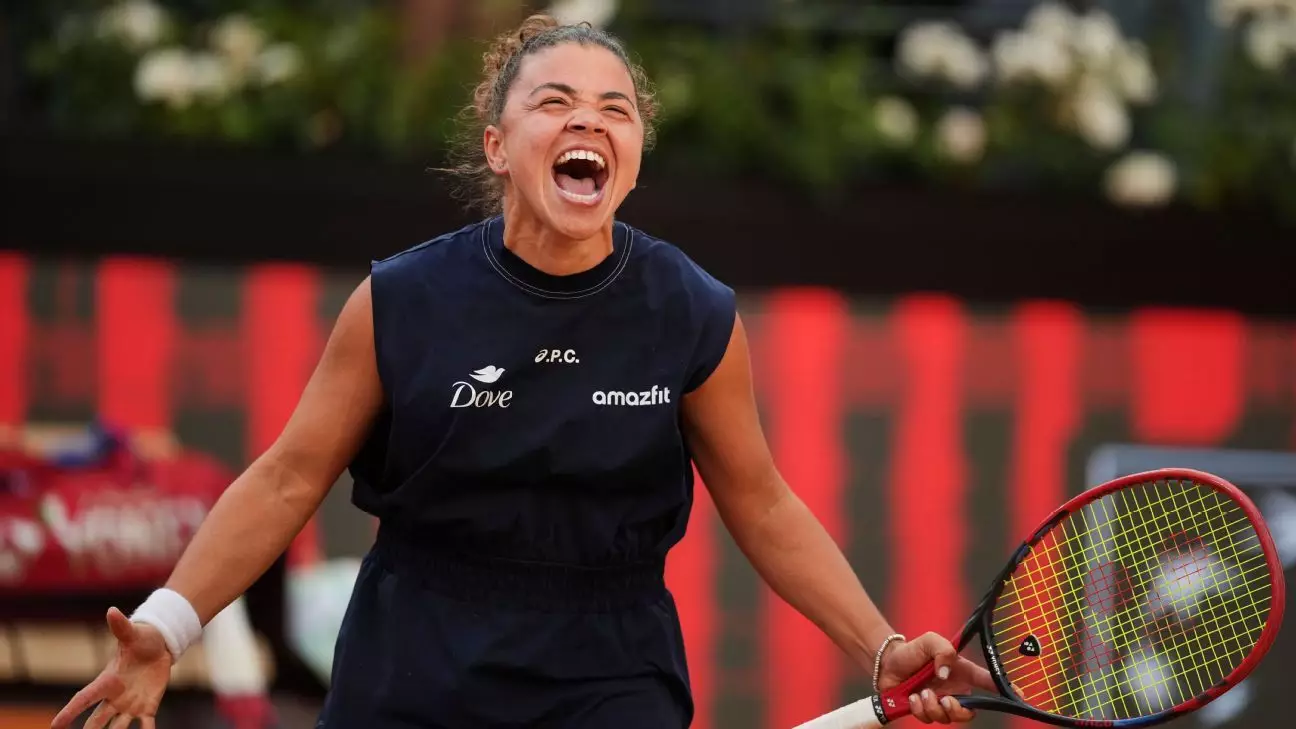As the sun set over the iconic Foro Italico, a wave of excitement surged through the crowd when Jasmine Paolini cemented her place in tennis history. With an emphatic 6-4, 6-2 victory against Coco Gauff, Paolini became the first Italian player in four decades to seize the Italian Open title, a feat that triggered an outpouring of joy from a passionately supportive audience. The historic backdrop of this win cannot be overstated; the last Italian champion was Raffaella Reggi back in 1985, while the male counterpart Adriano Panatta last reigned supreme in 1976. Such long-awaited victories truly evoke a sense of national pride and communal celebration for the sport in Italy.
Paolini’s journey to the top is a testament to resilience and determination in the face of fierce competition. The crowd’s energy amplified her performance, transforming the Foro Italico into a cauldron of support. When she hit a powerful serve that sealed the match, the spontaneous celebration that followed was visually striking – arms raised high and a radiant smile illuminated her face. In her post-match interview, Paolini expressed disbelief, stating, “It doesn’t seem real to me…winning it and holding up this trophy wasn’t even in my dreams.” It’s moments like these that transcend mere sporting achievements, morphing into life-defining milestones that resonate deeply within the athlete’s heart.
The Weight of Expectations and Future Aspirations
Amidst her individual triumph, Paolini’s success reflects a burgeoning movement within Italian tennis that is hard to ignore. Being merely a week away from the French Open, her victory couldn’t have come at a better time, propelling her to No. 4 in the WTA rankings. With this rise, Paolini not only stands as a symbol of hope for aspiring athletes nationwide but also raises the stakes for future competitions. The palpable buzz surrounding her ascent is tangible, and tennis enthusiasts across Italy are eagerly anticipating how her newfound ranking will influence her trajectory.
What is particularly notable is Paolini’s dynamic approach to her career. She maintained a rigorous mentality, making a coaching change ahead of such a pivotal moment; after parting ways with Renzo Furlan, she enlisted Marc Lopez’s expertise while continuing to benefit from the unwavering support of her doubles partner, Sara Errani. This strategy highlights a crucial lesson in sports: adaptability and the willingness to embrace change can significantly influence an athlete’s performance trajectory.
The Challenge Ahead: Facing Pressure and Building a Legacy
Contrasting Paolini’s celebration was Gauff’s challenging outing. The young American, ranked No. 3, struggled to find her rhythm, committing an alarming 55 unforced errors throughout the match. Gauff’s recent semifinal clash—an exhausting, grueling 3.5-hour bout—may have contributed to her fatigue, and it’s apparent that the pressures of elite sport can take a cumulative toll. Though Gauff walked away as the runner-up again, this gives her critical insights to reflect upon and improve as she prepares for future tournaments.
Moreover, Gauff’s narrative underscores the competitive nature of top-tier tennis, particularly on the clay, where quick adjustments to technique and resilience under pressure are fundamental. She has faced tough opponents in recent weeks, losing first in Madrid and now in Rome, revealing the inevitable ups and downs of an athlete’s career. Nevertheless, the strategic learnings and experiences she collects from these high-stakes matches will undoubtedly contribute to her development in the longer term.
A Celebration of a Thriving Tennis Culture
The Italian Open has served not just as a battleground for individuals like Paolini but as a celebration of a thriving national tennis culture. The enthusiastic crowds chanting “Ole, ole, ole, Jas-mine, Jas-mine” reverberated across the clay, illustrating the strong connection between players and their supporters.
With the potential for a historic double victory in sight, as both Paolini and Errani prepare for the women’s doubles final, the energy of Italian tennis is palpable. With President Sergio Mattarella present to witness this wave of success, it’s clear that the sport is experiencing a renaissance in Italy. As promising young talents step into the spotlight, the future of Italian tennis appears brighter than ever. Each match represents a new chance to inspire, to dream, and to elevate a rich legacy in this beloved sport.


Leave a Reply